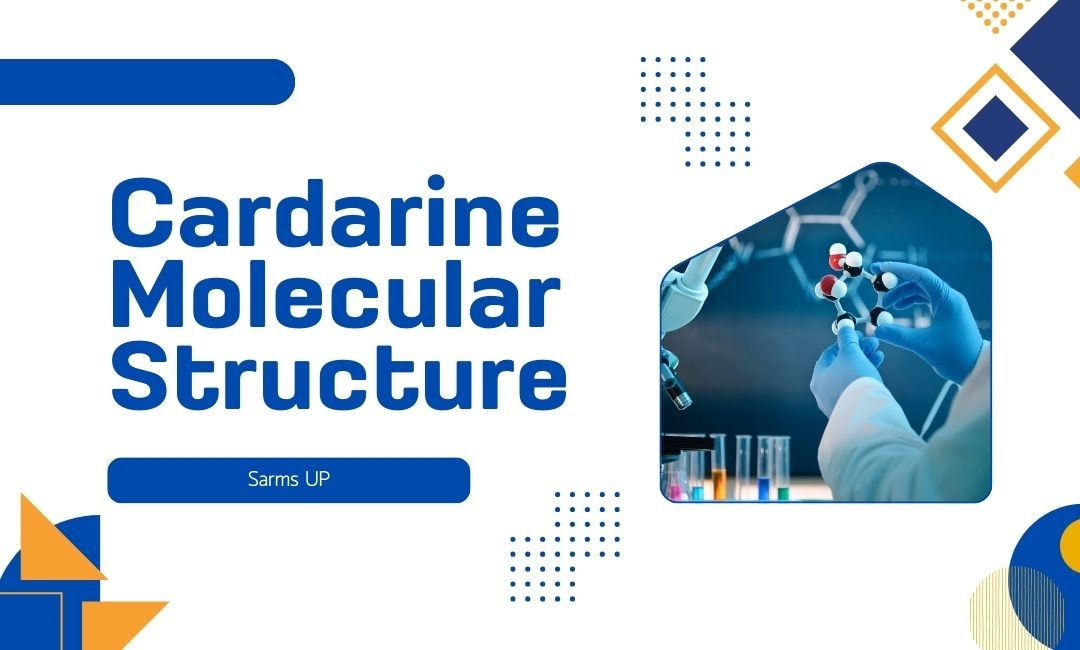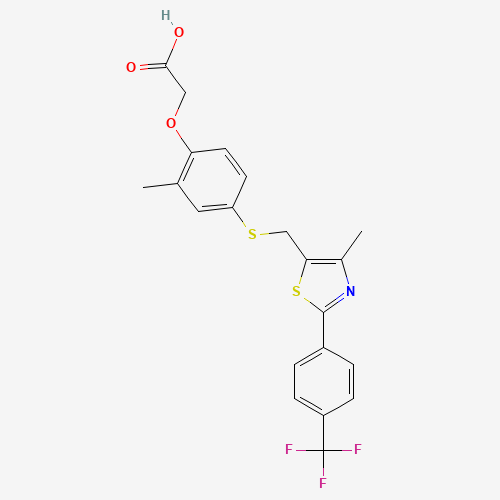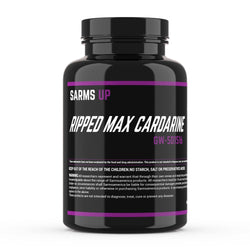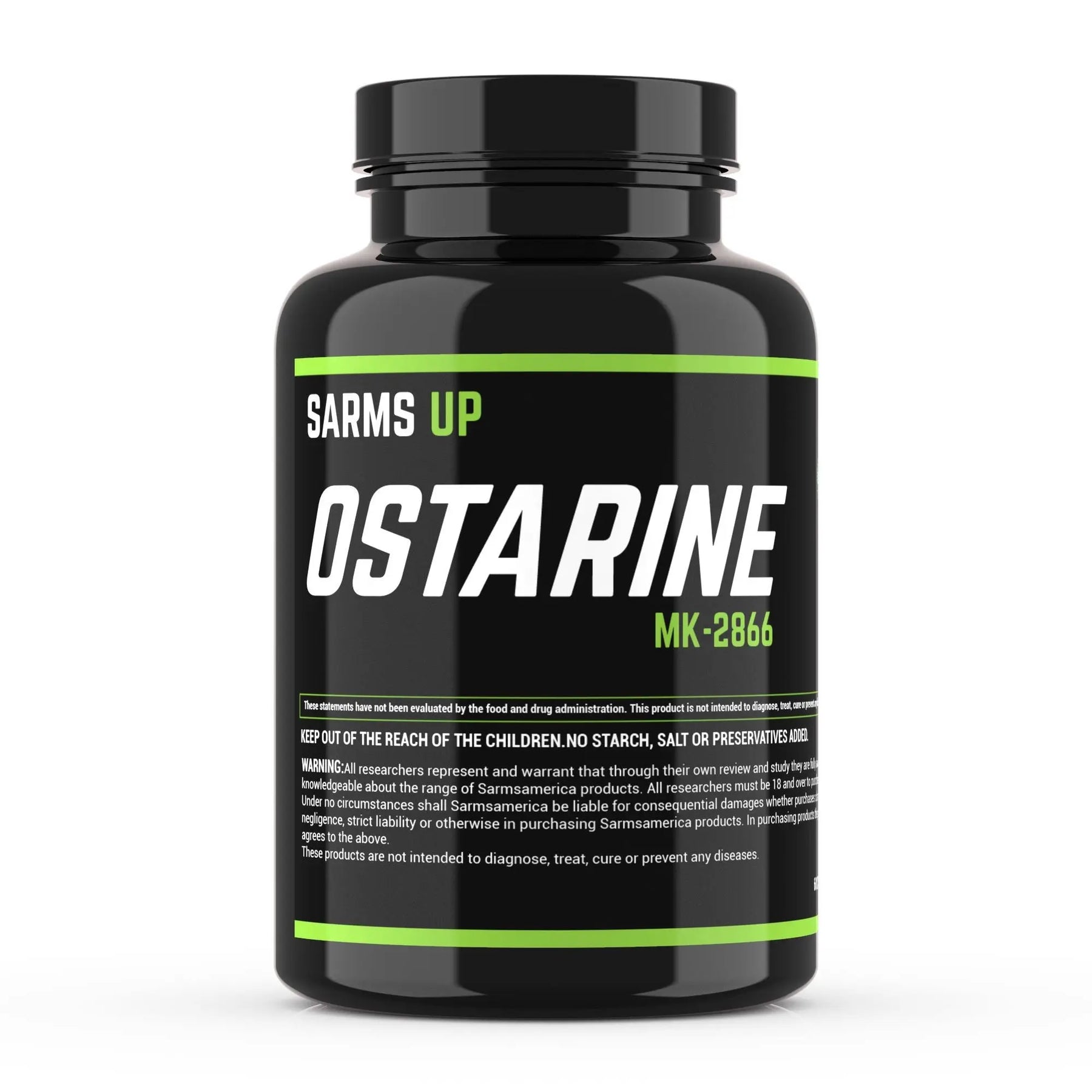Understanding the Molecular Structure of Cardarine: Key Insights

You train hard, you push your limits, but sometimes you wonder if there's a deeper science to optimizing your body. What if we told you that unlocking peak endurance and fat loss comes down to understanding something as small as a molecule? Many chase results, but few truly grasp the chemical blueprint behind them.
We're pulling back the curtain on Cardarine. You'll grasp its true potential and separate fact from fiction.
-
SARMs explained
-
Cardarine's exact molecular structure
-
How Cardarine works in the body
-
Past Cardarine research and studies
-
Potential side effects to watch for
-
Ongoing Cardarine trials
-
Finding quality SARMs
At Sarms UP, we take the guesswork out of this for you. Our medical and lab scientists craft each formula, so you get exactly what you expect. We make sure our products are 99% pure and HPLC tested.
What Are SARMs?
You've heard about Selective Androgen Receptor Modulators, or SARMs. These compounds have gained popularity among athletes and bodybuilders. They offer a unique approach to enhancing physique and performance, quite different from traditional options.
SARMs are small-molecule drugs that selectively bind to androgen receptors in your body. This targeted action means they can stimulate skeletal muscle and bone growth. Unlike older substances, SARMs aim to minimize impact on other tissues. This "selectivity" is their defining characteristic.
Imagine a specialized key that only opens certain doors in your body. SARMs are like that key, acting as agonists on activated receptor delta in specific areas. They influence how proteins involved in muscle and bone development behave. This makes them distinct from such drugs as conventional anabolic steroids.
Cardarine Molecular Exact Structure

Let's break down the molecular structure of Cardarine. This isn't just a science lesson; it's the key to understanding how GW 501516 performs.
The Chemical Blueprint
Cardarine, also known as GSK-516, boasts a specific molecular weight of 453.498 g/mol. Its full chemical name reveals its complex, yet precise, arrangement:
{4-[({4-methyl-2-[4-(trifluoromethyl)phenyl]-1,3-thiazol-5-yl}methyl)sulfanyl]-2-methylphenoxy}acetic acid.
Consider these key elements of its design:
-
Phenoxy Acetic Acid Group: This forms a vital part of its structure, influencing how it interacts within the body.
-
Trifluoromethyl Phenyl 1,3 Thiazol Ring System: This unique ring structure is critical for its targeted action. Specifically, a 2-(4-trifluoromethyl phenyl) group connects to the 1,3-thiazol-5-yl part.
-
Trifluoromethyl Group (C-F3): This small but mighty addition boosts the compound's stability.
This intricate design gives Cardarine its specific chemical properties. It's engineered to fit perfectly with certain biological receptors.
Why Structure Matters of This (Phenoxy Acetic Acid Group and Trifluoromethyl Phenyl 1,3 Thiazol Ring System)
Understanding Cardarine's precise structure helps us understand its function. This isn't just about what it's made of, but how those parts are arranged.
-
Targeted Action: The specific shape allows it to act as a peroxisome proliferator-activated receptor delta (PPARδ agonist). This means it has a high affinity for these receptors.
-
Stability: Features like the trifluoromethyl group give it stability, ensuring it stays active long enough to do its job.
This targeted interaction is key to its role as a metabolic modulator. It's why Cardarine stands out in research and discussions around increased fatty acid metabolism and lipid metabolism.
The Science Behind Cardarine
You know the structure, but how does Cardarine actually work inside your body to deliver those performance boosts? It all comes down to a specific cellular pathway. Cardarine acts as a peroxisome proliferator-activated receptor delta (PPARδ) agonist. This means it flips a very important switch.
When Cardarine GW-501516 binds to the PPARδ receptor delta, which is found abundantly in your skeletal muscle and other tissues, it kicks off a chain reaction. Think of the PPARδ receptor as a control panel for energy. When activated, it recruits other proteins involved in cellular signaling. This then turns upregulates specific genes.
This genetic activation leads to a shift in how your body handles fuel. Essentially, it tells your cells to prefer burning fat for energy. This process is called fatty acid oxidation or increased fatty acid metabolism. Instead of relying heavily on glucose (carbs), your body becomes a more efficient fat-burning machine.
This is why you might experience improved endurance. Your body accesses a vast and efficient fuel source – your fat stores. This mechanism of action is distinct and has been a central point in research collaboration and clinical development studies.
Cardarine in Research

You might wonder, what does the science say about Cardarine? It's been the subject of various studies, offering insights into its potential. We look at both early trials and animal studies to paint a complete picture.
GW501516 Early Clinical Trialing
Early on, GW 501516 (Cardarine) actually entered clinical development by GlaxoSmithKline (GSK) and Ligand Pharmaceuticals. The goal was to explore its potential as a potential treatment for metabolic and lipid disorders, like obesity, and even cardiovascular disease. This included studies on insulin resistance and improving high-density lipoprotein (HDL) cholesterol levels.
However, concerns were raised prior to its full development. Despite promising early results, especially with rats treated in lab settings, further development was halted. This decision wasn't due to a lack of effectiveness in early findings but rather other considerations.
Research On Mice
Animal studies, particularly on mice, have provided significant data on Cardarine's effects. Research consistently showshow it boosts fatty acid oxidation in skeletal muscle. For example, studies demonstrated that diet-induced obesity in animal models could be mitigated with Cardarine.
These studies often highlight its role in enhancing endurance. The mice could run longer, a clear indication of improved energy utilization. This evidence shows its strong impact on energy expenditure and the body's metabolism.
Cardarine Side Effects
You're savvy enough to ask about the downsides. While Cardarine GW-501516 has shown promising effects in research, it’s crucial to be aware of potential health risks. The initial clinical development of GW501516 was stopped for a reason.
The primary concern raised in animal studies, particularly with rats and mice, was the development of various cancers. These occurred in multiple organs, including the liver, stomach, and bladder, at higher doses and over longer periods. While these were animal studies, the findings were significant enough to halt human trials.
You might also hear about other potential side effects. These can include:
-
Liver Damage: Some reports suggest a risk to liver function.
-
Headaches and Nausea: Users have occasionally reported these discomforts.
It’s important to remember that Cardarine is on the World Anti-Doping Agency (WADA) prohibited list. Athletes who undergo a drug test for such drugs will test positive. This is why you see warnings from organizations like WADA about its use. The presence of Cardarine on the black market means you often find products without verified purity or dosage.
Current Cardarine Studies and Trials
You might be wondering if research on Cardarine is still happening, given its history. While its original clinical development was stopped, some scientific exploration continues, though not typically in human trials for its original purpose.
Most current "studies" you might find are often about its chemical properties or how it interacts in specific lab settings. For example, researchers might explore how it forms new solid forms or its detailed mechanisms of action in isolated cells. We see analyses of its crystal structures, for instance.
You won't find new, large-scale human clinical trials aimed at getting Cardarine approved as a drug for metabolic conditions. The health risks identified in previous animal studies are the main reason for this. However, academic researchers may still use it as a tool to study PPARδ receptor delta pathways in a controlled environment.
Some recent publications, often in academic journals, may discuss its effects in specific disease models or its fundamental cellular interactions. You might see ongoing work examining the role of PPARδ recruits in various biological processes, where Cardarine serves as a research compound.
Finding Quality SARMs
You're serious about your fitness goals, and you want to ensure any compounds you use are top-notch. Finding quality SARMs is crucial, as the market can be a bit like the Wild West. You want to avoid products that are underdosed, contaminated, or simply don't contain what they claim. We believe in transparency and verifiable quality.
Here's what you should look for:
-
Third-Party Testing: This is non-negotiable. Reputable suppliers will have their products independently tested for purity and concentration. This confirms you're getting what you pay for, without unwanted fillers or harmful substances.
-
Clear Labeling: Look for precise information on the compound, dosage, and ingredients. If a label is vague, it's a red flag.
-
Reputable Source: Seek out companies with a solid track record and positive reviews from other users. Word-of-mouth and established presence often speak volumes.
At Sarms UP, we pride ourselves on offering you the best. Our products are 100% pharmaceutical grade and HPLC batch tested for quality. We work with medical and lab scientists to ensure every formula meets strict standards. We even provide same-day free shipping over $80, getting your order to you fast.
We offer a range of products to help you crush your goals:
-
CARDARINE GW-501516: This SARM is your secret weapon for cutting. You'll experience improved endurance, enhanced fat loss, and increased power. The myriad benefits of incorporating Cardarine into your regimen include boosting your cardio and achieving a shredded look.

-
OSTARINE MK-2866 Enobosarm: We call this the ultimate SARM for lean muscle mass. It increases the protection of lean muscle during low-calorie diets, improves endurance, and enhances strength. Ostarine is known to be anabolic to muscle tissue, helping it hold onto muscle while leaning out.

-
FAT BURNER STACK: This powerful combination of OSTARINE MK-2866 Enobosarm and RIPPED MAX CARDARINE GW-501516 is designed to maximize fat loss and lean muscle preservation. You'll experience accelerated fat burning, increased endurance, and overall improved body composition for a toned physique.

Ready to Achieve Your Goals with Sarms UP?
You've now got the inside scoop on Cardarine's precise molecular structure and how SARMs work. We've explored the research, the benefits, and even the precautions. This knowledge empowers you to make informed decisions about your fitness journey.
Here are your key takeaways:
-
SARMs offer targeted action on muscle and bone receptors.
-
Cardarine's unique structure drives its fat-burning and endurance benefits.
-
Research highlights Cardarine's impact on fat metabolism.
-
Awareness of potential health risks and regulations is crucial.
At Sarms UP, we're dedicated to bringing you the highest quality, lab-tested SARMs. We provide products like RIPPED MAX CARDARINE GW-501516 and OSTARINE MK-2866 Enobosarm so you can pursue your peak performance with confidence. We make sure our SARMs are pure and effective, helping you reach your ultimate goals.
FAQs
Is Cardarine Banned by USADA and the World Anti-Doping Agency?
Yes, the World Anti-Doping Agency (WADA) has Cardarine (GW 501516) on its prohibited list. This means athletes cannot use it and will test positive if it's detected. This applies to organizations like USADA as well.
Does Cardarine Speed Up Metabolism?
Yes, Cardarine can speed up your metabolism, specifically your fatty acid oxidation. It acts as a peroxisome proliferator-activated receptor delta (PPARδ) agonist, which shifts your body's energy preference towards burning fat for fuel.
What Were the Results for Mice Injected with GW501516?
Research on mice injected with GW 501516 showed significant results, including improved endurance and a reduction in diet-induced obesity. The mice displayed enhanced fatty acid metabolism and better exercise capacity.
Does Cardarine Affect Blood Sugar?
Studies suggest that Cardarine, through its mechanism of action on lipid metabolism, can help improve insulin resistance and might positively affect blood sugar regulation. This was one of the areas explored in its early clinical development for metabolic disorders.

